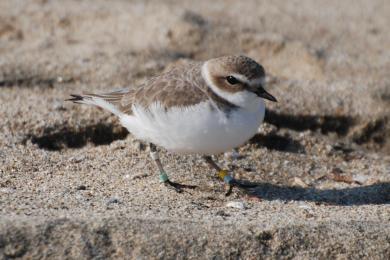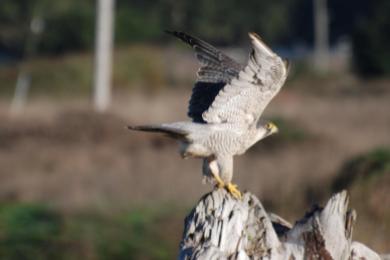California State Parks (CSP) must concern itself not only with this issue—the pleasure or annoyance of its visitors—but also the impact on wildlife, as well as other natural and cultural park resources.. While there is no statewide ban on drones in all state parks, the department’s formal policy gives the superintendent of each California State Parks District the authority to prohibit the use of drones in a district’s parks by posting such an order. The statewide policy says in part: “Posted orders may prohibit drones for numerous reasons, including: protection of threatened species; threats to cultural and natural resources; high fire danger; public safety; recreational conflicts; impacts upon visitor experience privacy; and park unit classification. Therefore, drone users should always check with their local State Park District for any specific posted orders.”
The Santa Cruz District, which includes the San Mateo Coast Sector and all the state parks and beaches supported by CSPA, posted a new drone policy in May of this year.
“To protect wildlife and cultural resources, and for the safety and welfare of visitors and staff; the Park Units in the Santa Cruz District are closed to the use of Model Aircraft, Unmanned Aircraft Systems (UAS) [i.e., drones] and Gliders in flight.”
The full notice may be accessed here. There are exceptions for areas of Seacliff State Beach and Sunset State Beach, as well as for special events and California Film Commission permit holders.
Within the San Mateo Coast Sector of the Santa Cruz District this is welcome news! Parks staff and most visitors have long considered drones to be inconsistent with the desired park experience. They can be noisy and intrusive within the natural environment and have negative impacts on the wildlife found within the parks.
Nesting birds, whether in trees or on the beaches and some of which are listed as endangered or threatened species, are often disturbed by flying drones and may abandon their nests. To small mammals the drone may be mistaken for a hawk; this disturbs their foraging behavior and impacts their survival. To hawks and other raptors a drone may be considered competition. They may attack a drone and be injured (instances have been witnessed), or drones may displace the hawks from their usual range.
We hope this new policy will improve the parks for all of our visitors and wildlife alike.



